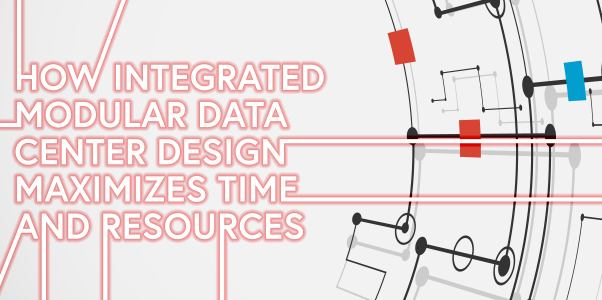
By Dutch Wickes and Matt Lamont
The words “modular data center” create many different images in peoples’ minds. Some might visualize an equipment skid with individual components assembled off-site, which is then transported to a conventional building and put into place. Others may picture a full IT module with cooling racks, built off-site and placed into a yard with power infrastructure.
Regardless of the mental image they conjure, modular data centers consistently lead to major benefits over conventional construction projects including high-quality installation, minimal on-site work, and scalable and replicable solutions. Perhaps most importantly, modular data centers can maximize speed to market and be extremely
cost-effective for clients and project teams.
The HKS Mission Critical team, which has many years of experience designing and delivering modular data centers, recently had the opportunity to maximize all these benefits while working on the SoFi Stadium Modular DAS Data Center in Inglewood, California.
A Major Challenge
This project presented a major challenge: our client needed a 13,000 square foot data center to support a Distributed Antenna System and host four carriers. Adding to the challenge was a mandate that procurement, design, local approval, fabrication, delivery and full operational capability all team got to work immediately and made sure to involve all design disciplines, modular manufacturer TAS, the construction manager, and client representatives to facilitate real-time decision making and approvals.
We didn’t follow the typical approach of having one design discipline work to a certain level of completion before passing the project to the next discipline. All players were at the table throughout the process. We completed the design during a one day work session, followed up with concept and schematic design, and kept lines of communication open during twice-weekly coordination sessions. At the end of that first day, an HKS project manager declared that the project was akin to a rocket being launched — after lift-off, there was no turning back and no slowing of the pace.
In addition to being a fantastic example of teamwork and fast paced, integrated decision making, the SoFi Stadium Modular DAS Data Center features a best-inclass design that is scalable and replicable. It has 30 modules designed at standardized sizes for simplified manufacturing and transport to the project site from the fabrication and assembly facility in Houston, Texas.
The data center has white space modules for telecom equipment and grey space modules for mechanical and electrical equipment. Modules arrived with MEP systems already designed and installed and came precertified with UL labels, which reduced work time and inspection requirements at the site. The team also chose to have the hollow metal doors and frames between white space and grey space modules assembled in the controlled factory environment — everything from door hardware to exit lights and
signage was installed in Houston prior to shipment to Southern California. Today, the DAS modular assembly and all critical equipment are contained within a screened
perimeter wall, affording a secure environment to critical operations, and effectively sequestering those operations from the public environment at SoFi Stadium and
Hollywood Park.
Lowering Costs and Adding Value
There are many ways modular data center design and construction can reduce costs compared to traditional construction. Once an appropriate module is created, it’s relatively simple to repeat the process and lower costly material and labor expenses. Like an assembly line, off-site module creation maximizes budget efficiency. Cross-trained professionals at the manufacturing plant who build modules take the place of a variety of tradespeople and countless assembly hours at the job site. Additionally, offsite module manufacturing can happen at the same time as job site preparations, so construction timelines and associated costs are reduced.
With the SoFi Stadium Modular DAS Data Center, all these cost benefits paid handsome dividends. The initial one-day work session resulted in a rough order-ofmagnitude
budget for the project, and the project team worked closely with the client ownership group to adequately communicate and work through changes as the project progressed. TAS’ Houston manufacturing plant was large enough that it could assemble and house most modules concurrently, leading to significant time and cost savings. The modular solution led to seamless installation at the site with fewer tradespeople and greater organization than traditional construction, which allowed the project to meet its ambitious schedule without financial strain.
Successful outcomes at SoFi Stadium Modular DAS Data Center were only possible because the project was championed by a client that staffed a team of professionals at the top of their game and was willing to put trust in the hands of dedicated designers and manufacturers to deliver it. Because of that trust and our ability to collaborate in a talent-rich environment, our HKS team was able to meet the short timeline, save money and create a facility capable of handling a high volume of data for the NFL’s largest stadium.
Dutch Wickes is Global Practice Director, Mission Critical, and a Principal at HKS. He can be reached at dwickes@hksinc.com.
Matt Lamont is Practice Leader, Mission Critical and a Principal at HKS. He can be reached at mlamont@hksinc.com.